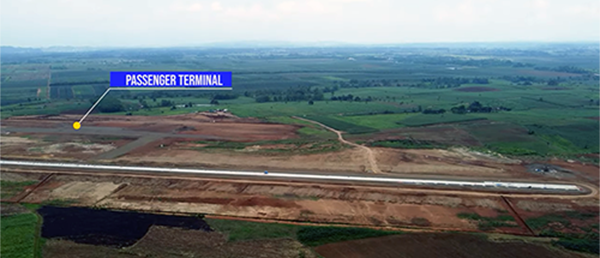
-
Tacloban City Airport will get P1.42 billion of the P2.5 billion allocation for aviation infrastructure development in next year’s budget
-
Antique Airport will receive P500 million while Laoag International Airport will get P445 million
-
Bukidnon Airport will get P80 million and Ninoy Aquino International Airport, P43 million, according to Makati Rep. Luis Campos Jr., House appropriations committee vice-chair
Three airports are getting a total of P2.5 billion under the aviation infrastructure development in next year’s national budget with Tacloban City Airport receiving the lion’s share at P1.42 billion.
Two other recipients of the funding will be Antique Airport, also known as Evelio Javier Airport, which will get P500 million, and Laoag International Airport, which will receive P445 million, Makati City Rep. Luis Campos Jr., House appropriations committee vice-chairperson disclosed on August 29.
The outlay for the three airports was requested by the Department of Transportation (DOTr) for its continuing aviation infrastructure program to boost air travel, Campos said.
“We are all for increased spending to build up our aviation infrastructure across all regions. There’s no question that airports are powerful generators of economic growth, jobs and income,” he said.
The lawmaker said airports “facilitate mobility of people and goods, which also benefits consumers and industries, especially micro, small and medium enterprises (MSMEs) that now account for 99% of the 958,000 registered business establishments in the country.”
The Civil Aviation Authority of the Philippines designates Tacloban City Airport, also known as Daniel Z. Romualdez Airport, as a principal class 1 domestic airport, Laoag International Airport as a secondary/alternate international airport, and Antique Airport as a principal class 2 domestic airport.
Bukidnon Airport, which is expected to start commercial operations in 2023, has an P80 million budget, while the Ninoy Aquino International Airport will receive P43 million, Campos said.
Bigger and better airports are indispensable to the country’s overall disaster readiness, Campos said. “They enable us to rapidly deploy emergency first responders as well as relief supplies and equipment to regions hit by typhoons, earthquakes, and other natural calamities,” he said.
The Philippines has been tagged as one of the world’s most disaster-prone countries, being on the path of not fewer than 22 typhoons each year and lying on the Pacific Ring of Fire where frequent volcanic eruptions and earthquakes occur due to movement of Earth’s tectonic plates.
Campos said government funding for aviation infrastructure is usually spent on building, rehabilitating, or improving runways, taxiways and aprons, air traffic control buildings as well as passenger and cargo terminals.
Part of the money is also spent on aircraft refueling facilities, fire and rescue stations, powerhouses, water and sewage systems, perimeter fencing, and other aviation-related projects, Campos said.
RELATED STORY: CAAP set for passenger surge




